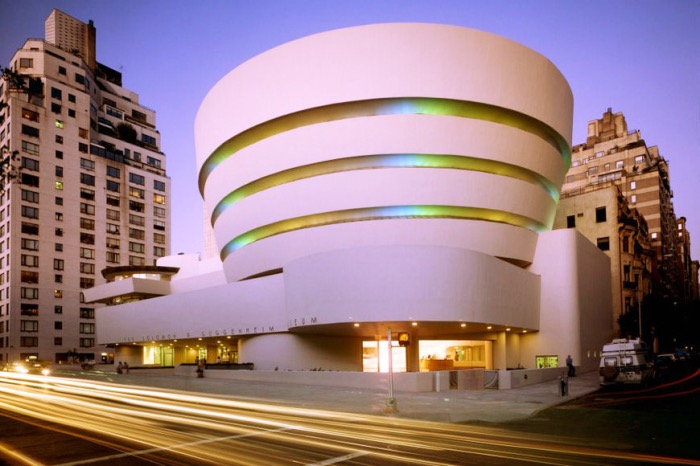
WORKS OF THE GUGGENHEIM MUSEUM IN NEW YORK YOU MUST SEE
What to see and which artworks of the Guggenheim Museum in New York you need to know?
Here is a list of the unmissable masterpieces if you are going to visit the museum that, when it opened, changed the modern art world forever, and is now the point of reference for those who love 20th-century art and new contemporary tendencies.
Works of the Guggenheim Museum in New York
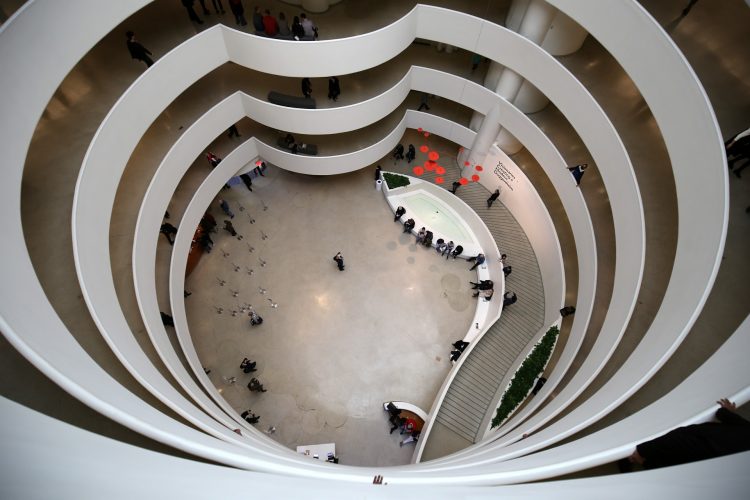
WORKS OF THE GUGGENHEIM MUSEUM
The Guggenheim Museum in New York opened in 1959, but, actually, the Guggenheim Museums in the world are many and all linked to the same foundation.
In Venice is the Peggy Guggenheim Collection, there’s the Guggenheim Museum Bilbao, and other venues in Berlin and in Abu Dhabi. However, only in the New York museum you can feel the history of this special group of museums.
The building, planned in 1943 by architect Frank Lloyd Wright, has a very modern design still today.
The museum houses one of the most important art collections of the 20th century and also tendencies of contemporary art of the 21st century.
LE MOULIN DE LA GALETTE BY PICASSO
When Picasso did this painting was only 18 years old, had just arrived in Paris and painted by drawing inspiration from Impressionist painters’ style and post-Impressionism.
The scene depicted is set in the famous Parisian café Moulin de la Galette, and Picasso portrays people with big colour spots, and all around artificial lights seem to float in the air.
The two women kissing seem to exit one of Toulouse-Lautrec’s works.
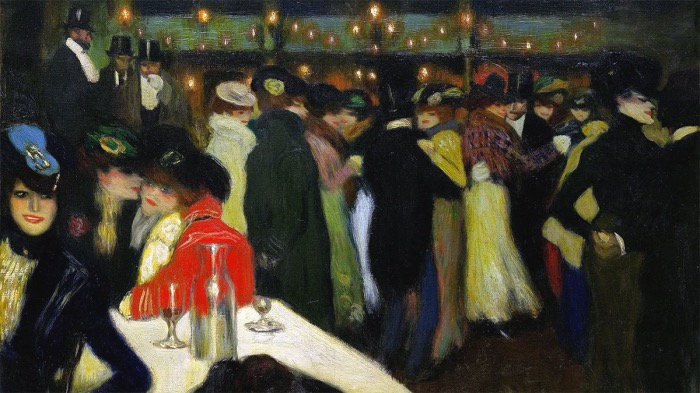
Le Moulin de la Galette by Picasso
NUDE BY MODIGLIANI
Among works of the Guggenheim Museum of New York you can admire one of the 26 female nudes by Amedeo Modigliani.
The painting, painted in 1917, seems to draw inspiration from nude paintings such as the Venus of Urbino by Titian and The Maja desnuda by Goya.
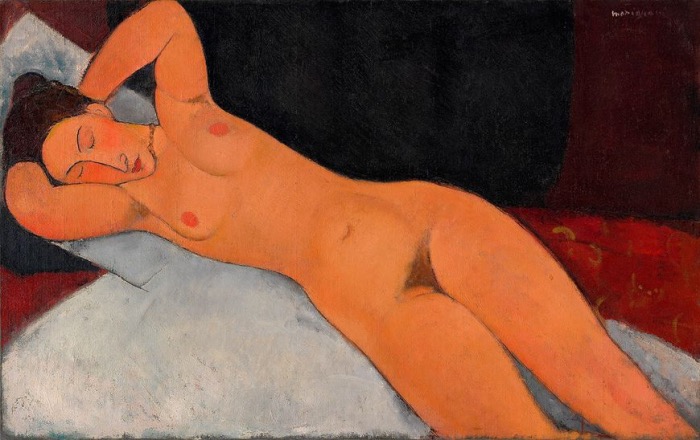
Nude by Modigliani
COMPOSITION 8 BY KANDINSKY
This oil painting on canvas, executed in 1923 by Kandinsky, is a representation of basic geometric shapes intersecting in a seemingly haphazard way.
You can identify circles and straight lines, but also trapezoids, wedges and curved lines.
Kandinsky attributes a precise meaning to shapes and colours, defined in his most famous book “On the Spiritual in Art”.
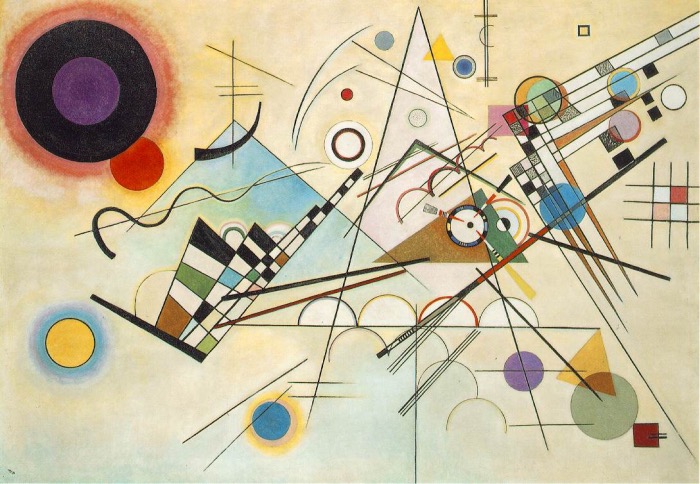
Composition 8 by Kandinsky
GREEN VIOLINIST BY CHAGALL
Executed in 1924 by Marc Chagall, the painting portrays a violinist who seems to dance above the rooftops.
Chagall wanted to represent the condition in which the Jews lived in the world: an unstable life similar to the life of the musician who has to play music while in balance on a rooftop.
The houses depicted are those of Vitebsk, his country of origin, and are the symbol of his attachment to traditions.
The painting is considered to be the inspiration for the Russian musical Fiddler on the Roof.
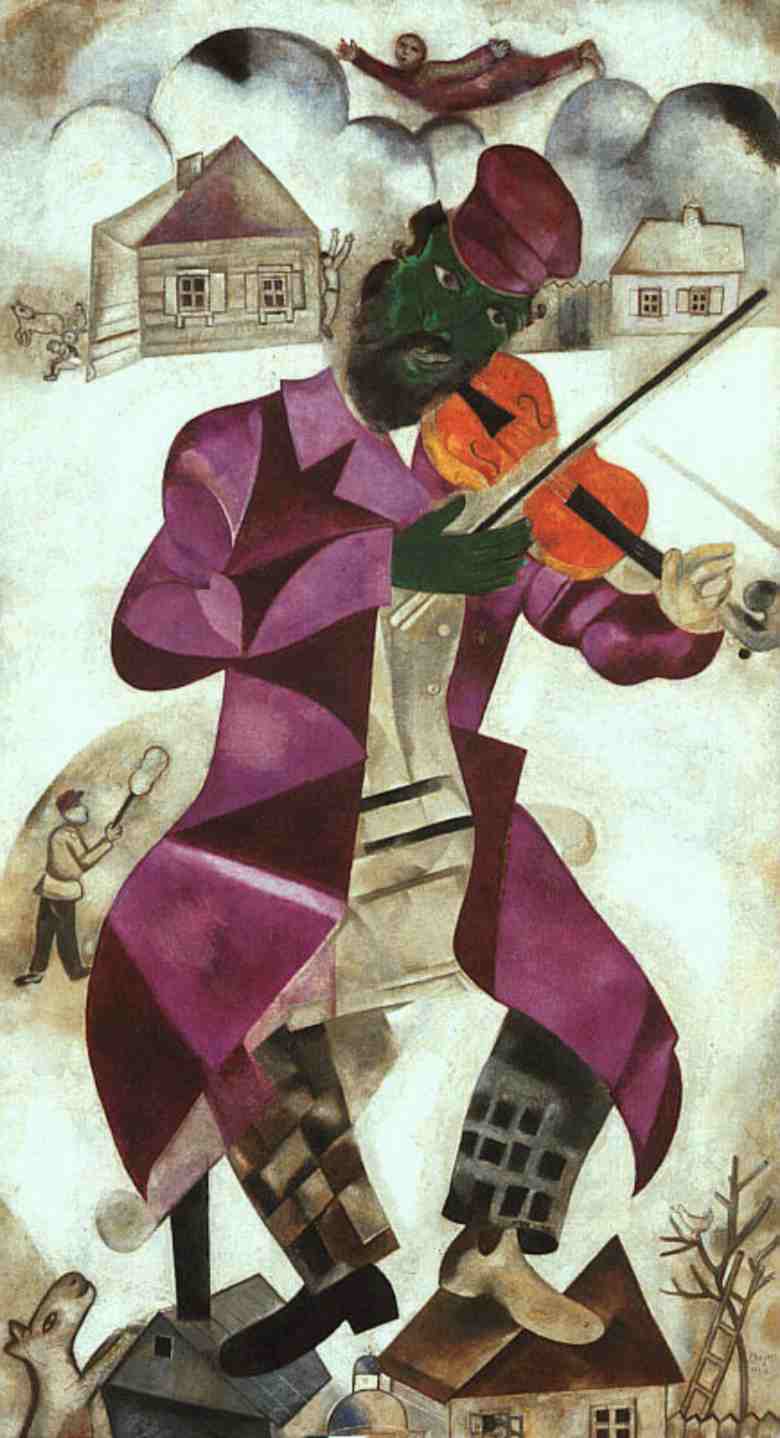
Green violinist by Chagall

